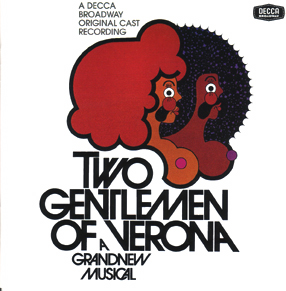
(845) 246-6944
· info@ArtTimesJournal.com
Shakespeare
on Broadway 3
By
FRANK BEHRENS
ART TIMES
March 2006
Whenever I give
a talk that includes the musicals of the 1950s, there is always a laugh
when I mention that the original title of “West Side Story” was “East
Side Story.” Well, it’s true. In 1949, Leonard Bernstein and Arthur
Laurents were asked by Jerome Robbins to collaborate on a musical based
on “Romeo and Juliet.” But instead of feuding families, there would
be feuding religions as a Jewish boy falls in love with a Catholic girl
despite the pressures put upon them by their peers.
The
idea never came to fruition, but it stuck in Bernstein’s mind. However,
for several reasons, he decided to change the religious slant to an
ethnic one and moved the action from the East to the West Side of Manhattan.
Bernstein explained that the Jewish-Catholic gang problems had died
down somewhat, whereas the influx of Puerto Rican families and the culture
clashes with the “older” inhabitants were in the news. I personally
have always suspected that he made the change because Puerto Rican music
provides much better dance sequences than does liturgical music.
Although
the playbills and scores show that the lyrics are those of Stephen Sondheim,
insiders have always said that some of the songs are entirely the work
of Bernstein. But until some evidence is unearthed, one can never tell
who wrote what.
On
the whole, the Romeo and Juliet story is fairly faithfully handled,
what with the rival gangs being the perfect updated version of the Montague
and Capulet street brawlers. Even the bawdy humor of the servants that
opens up the Shakespeare play is preserved in the mocking “Officer Krupke”
sequence.
One
of the major elements of the Bernstein creation is the emphasis on dance.
So the Capulet ball becomes the dance at the gym; and the now graceful,
now dynamic dance numbers nearly compensate for a good deal of the Shakespearean
poetry that is lost in this transposition of the action to Manhattan
of the 50s.
Passing
on to 1971, we have the Joseph Papp production of “Two Gentlemen of
Verona.” This is certainly one of Shakespeare’s earlier comedies and
not a very well known one at that; so Papp felt he could stick with
the plot as given, but set it in a sort of timeless zone in which costumes
from all periods could be used. And, of course, set it all to rock music.
Now
in my mind, this is a most serious departure from the “feel” of the
original. The Shakespeare play is a spoof on the exaggerated importance
of fine speaking and witty remarks. Any good production will positively
drip with elegance as the young lovers—Valentine and Proteus (guess
which one is the unreliable one from the names alone) and the much sought
after Julia and her friend Silvia—go through all the superficialities
that high society demanded back then. Somehow—and I might get
arguments—rock music simply cannot by its very nature carry that
essence.
But
who can argue with success? The play ran for 627 performances, but never
enjoyed a film version or continuing revivals as did “West Side Story.”
The
same problems crop up with filming Shakespeare in updated surroundings.
At the very least, “thee” and “thou” ring false when “Twelfth Night”
(say) is presented in Victorian dress, not to mention the swords. I
cannot bring myself to watch the “Titus” film which is set in a nightmare
Rome that includes loud speakers and motorcycles and in which no one
can create a credible character in this incredible world.
On
the other hand, neither Rodgers nor Hart really expected an audience
to believe that 1940s tunes were being sung by characters in the ancient
world of Ephesus. Then again, “Comedy of Errors” is particular devoid
of beautifully poetic lines. That is why (for me) “The Boys from Syracuse”
succeeds where Papp’s “Two Gentlemen of Verona” fails. It is not because
the score of “Two Gentlemen” is inferior to that of “The Boys”—which
it most certainly is—but that it conflicts with the essence of
the play whereas the Rodgers score does not.